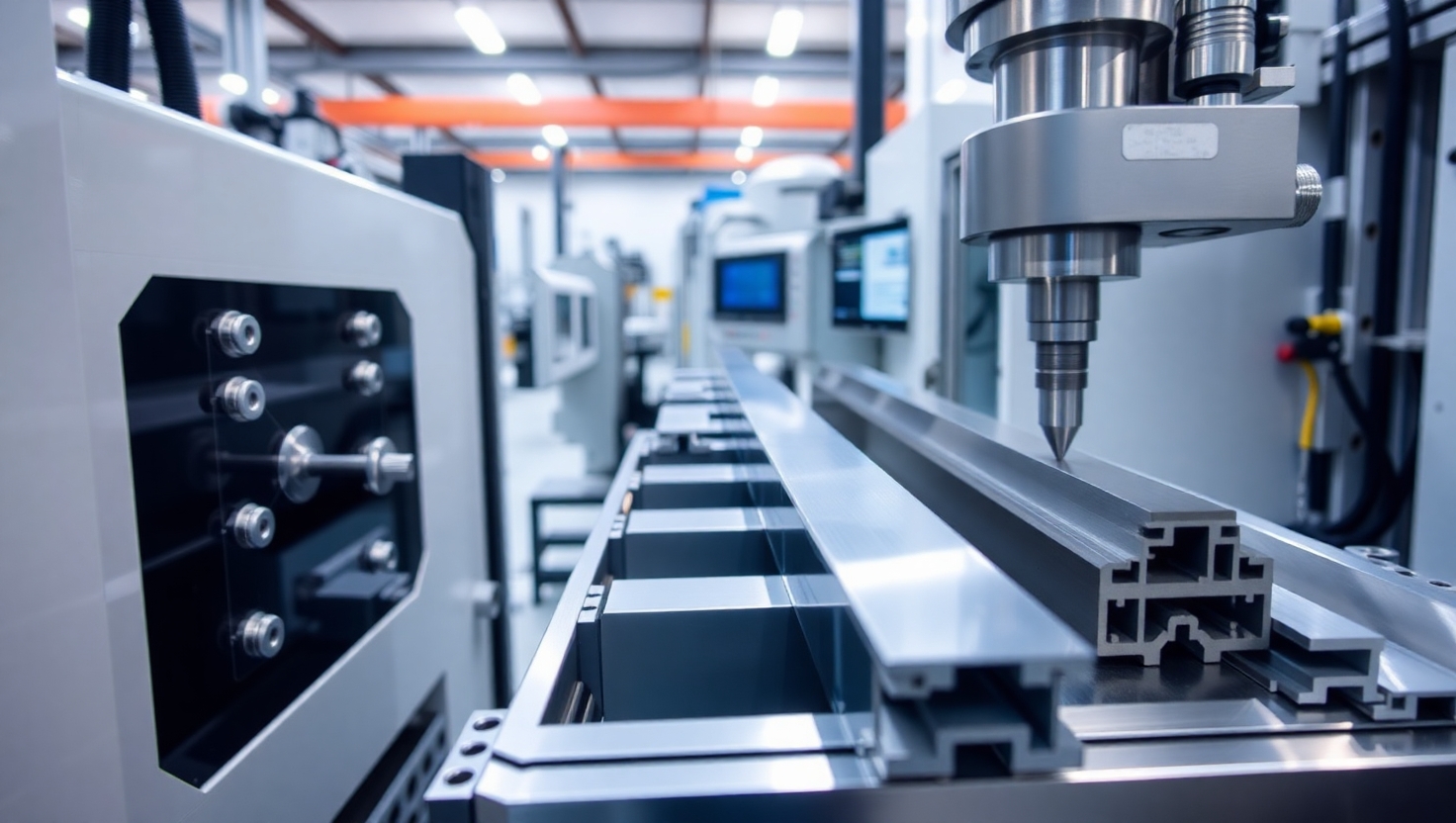Top CNC Machining Processes for Aluminium Extrusion
Published by: ALUTimes | Date: July 2025
Introduction
CNC machining plays a vital role in enhancing the utility and performance of aluminium extrusion components. Once extruded, aluminium profiles often require further machining to meet dimensional tolerances, create intricate features, or prepare them for assembly. In this article, we’ll explore the most widely used CNC machining processes for aluminium extrusions, their benefits, applications, and challenges—along with expert insights for manufacturers and engineers.
Why CNC Machining Is Essential After Aluminium Extrusion
Aluminium extrusion delivers long profiles with fixed cross-sections, but these profiles often need holes, notches, slots, threads, or surface finishing to suit their final application. CNC machining enables this customization with high accuracy and repeatability, making it indispensable in industries like construction, automotive, aerospace, and renewable energy.
1. CNC Milling
CNC milling uses rotating cutters to remove material from a stationary aluminium profile. It’s perfect for creating complex flat surfaces, grooves, and pockets on extrusions.
- Common Applications: Housing slots, cable channels, face machining
- Advantages: High precision, smooth surface finish, versatility
2. CNC Drilling
Drilling is essential for making holes for fasteners, pins, or fluid channels in aluminium profiles. CNC drilling ensures consistent diameter and depth, especially for batch production.
- Used In: Window frames, assembly-ready mechanical parts, bracket installations
- Challenges: Burrs at hole exits and tool deflection in thin sections
3. CNC Tapping and Threading
This process adds internal threads to holes drilled in aluminium components. CNC tapping offers tight control over depth and pitch, critical for mechanical assemblies and fixtures.
- Suitable For: Fastening systems, modular structures
- Key Consideration: Proper lubrication to avoid thread galling
4. CNC Cutting and Trimming
After extrusion, aluminium profiles are often oversized and need precise trimming or complex angle cuts. CNC cutting ensures repeatable results and minimal waste.
- Examples: Frame lengths, mitre joints, end caps
- Benefit: Reduces the need for manual grinding or secondary processing
5. CNC Slotting and Grooving
These processes carve out internal or external slots along the profile body. Slotting is crucial in structural, architectural, and enclosure designs for sliding mechanisms or snap fits.
- Common Use: Solar mounting structures, rail systems
- Tips: Use carbide tools and control RPM to reduce chatter
Quality Considerations in CNC Machining of Aluminium
- Dimensional Accuracy: Machining must comply with GD&T (Geometric Dimensioning and Tolerancing)
- Surface Finish: Roughness levels may vary from Ra 0.8 µm to Ra 3.2 µm depending on function
- Defect Checks: Visual inspection, X-ray or CMM analysis for critical parts
Benefits of CNC Machining for Aluminium Profiles
- Scalable and flexible for both low and high-volume production
- Improves product quality and performance consistency
- Supports integration with CAD/CAM software for smart manufacturing
- Reduces human error and speeds up prototyping cycles
Industry Applications of CNC-Machined Extrusions
- Architecture: Curtain walls, skylights, modular cladding
- Automotive: Lightweight crash components, seat frames
- Aerospace: Instrumentation panels, frame stiffeners
- Electronics: Heatsinks, mounting panels, enclosures
Conclusion
CNC machining unlocks the true potential of aluminium extrusion profiles. From precise holes to intricate grooves and perfect finishes, these machining operations prepare aluminium components for real-world use. Whether you’re a manufacturer, product designer, or plant supervisor, understanding these processes helps improve quality, reduce costs, and deliver better results across applications.
Disclaimer
This article is for informational purposes only. ALUTimes provides unbiased insights based on industry practices and research. Always consult with manufacturing experts for specific production requirements.

